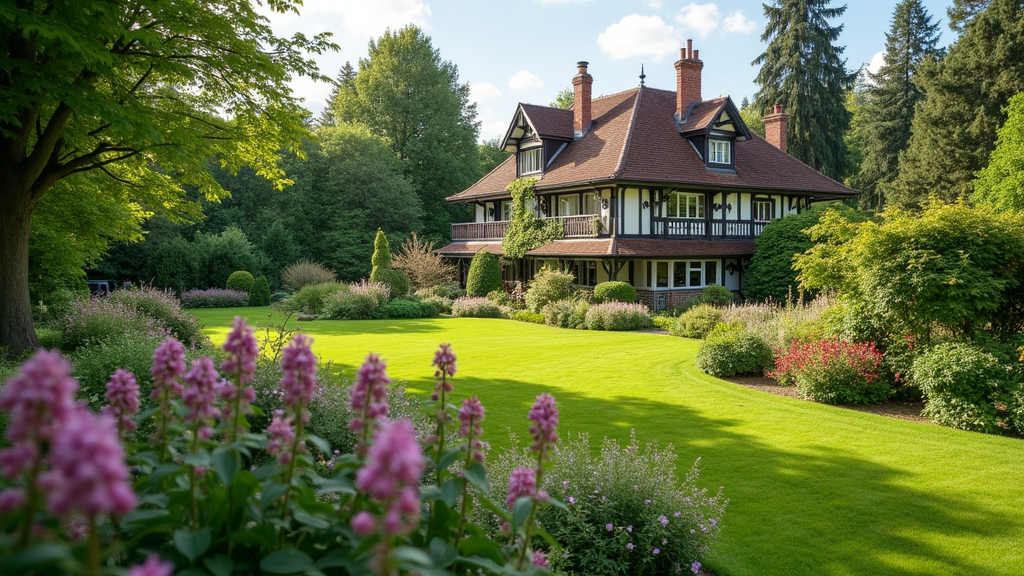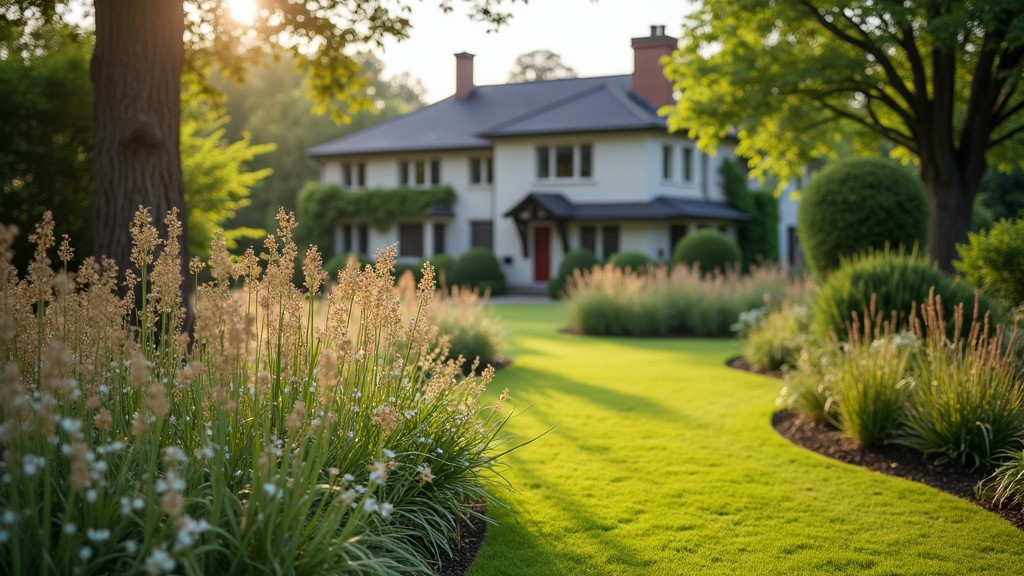Introduction
When it comes to enhancing the beauty and functionality of your yard, eco-friendly landscaping is becoming increasingly popular. This approach not only benefits the environment but also enriches your living space. For homeowners in Stokesdale, NC, embracing sustainable landscaping solutions can transform your outdoor area into a vibrant and welcoming oasis. In this comprehensive article, we’ll explore various eco-friendly landscaping solutions for Stokesdale homeowners, covering everything from native plants to water conservation techniques.
Eco-Friendly Landscaping Solutions for Stokesdale Homeowners
Why Choose Eco-Friendly Landscaping in Stokesdale?
Choosing eco-friendly landscaping isn't just a trend; it's a lifestyle choice that contributes to environmental sustainability. In Stokesdale, where natural beauty abounds, homeowners can utilize sustainable practices to enhance their properties while preserving local ecosystems.
Benefits of Sustainable Landscaping
Reduces Water Consumption: By using drought-resistant plants and efficient irrigation systems, you can significantly cut down on water usage. Promotes Biodiversity: Native plants attract local wildlife and pollinators, creating a balanced ecosystem. Minimizes Chemical Use: Organic gardening methods reduce reliance on harmful pesticides and fertilizers. Improves Soil Health: Healthy landscaping practices enhance soil quality, fostering a thriving garden environment.Understanding Native Plants in Stokesdale
What Are Native Plants?
Native plants are species that naturally grow in a specific region without human intervention. In Stokesdale, these include varieties adapted to local conditions, making them more resilient and easier to maintain.
Advantages of Using Native Plants
- Low Maintenance: Native species require less watering and care compared to exotic plants. Soil Compatibility: They are well-suited to local soil types, promoting healthier growth. Ecosystem Support: Native plants provide food and habitat for local wildlife, helping sustain biodiversity.
Popular Native Plants for Stokesdale Landscapes
| Plant Name | Benefits | |---------------------|---------------------------------------| | Black-Eyed Susan | Attracts butterflies; drought-tolerant | | Eastern Redbud | Beautiful spring flowers; supports pollinators | | Coneflower | Hardy; excellent for attracting bees |
Designing an Eco-Friendly Landscape Plan
Steps to Create Your Sustainable Landscape
Assess Your Space: Take note of sunlight patterns, soil conditions, and existing flora. Set Goals: Determine what you want from your landscape—be it aesthetic appeal or practical features like vegetable gardens. Choose Plants Wisely: Select a mix of native plants that offer year-round interest. Incorporate Hardscaping: Use permeable materials for patios or walkways to allow rainwater infiltration.Water Conservation Techniques
Efficient Irrigation Systems
Investing in smart irrigation systems can dramatically reduce water waste while keeping your landscape healthy. Consider installing drip irrigation or rain barrels to collect runoff.
Drought-Tolerant Planting Strategies
Opt for xeriscaping by choosing drought-resistant plants that thrive with minimal watering once established.
Creating Wildlife Habitats
Attracting Birds and Pollinators
Building birdhouses or installing bee hotels can help foster a thriving ecosystem within your own backyard.
Essential Features for Wildlife Gardens
- Diverse plant life offering various food sources Water features like ponds or bird baths Sheltered spots with native shrubs or brush piles
Sustainable Lawn Care Practices
Organic Lawn Maintenance Tips
- Use organic fertilizers made from natural ingredients. Practice mowing techniques such as leaving grass clippings on the lawn (known as "grasscycling") to return nutrients back into the soil.
Composting at Home
How Does Composting Work?
Composting involves recycling organic waste into nutrient-rich soil amendments. It’s an excellent way to reduce landfill contributions while benefiting your garden!
Easy Steps to Start Composting
Choose a compost bin or create a compost pile. Add green materials (like vegetable scraps) and brown materials (like dried leaves). Regularly turn the pile for aeration until decomposition occurs.The Role of Mulching in Eco-Friendly Landscaping
Benefits of Using Mulch
Mulching suppresses weeds, retains moisture, and improves soil health over time. Organic mulches break down into nutrients as they decompose!


Energy-Efficient Outdoor Lighting
Choosing Solar-Powered Lights
Solar lights harness sunlight during the day to provide illumination at night without increasing your energy bills or carbon footprint.
Incorporating Edible Landscapes
Growing Your Own Food
Planting fruits, vegetables, and herbs not only enhances aesthetics but also provides fresh produce right at your doorstep!
Popular Edible Plants for Stokesdale Gardens
| Plant Name | Growth Requirements | |--------------------|----------------------| | Tomatoes | Full sun; regular watering | | Peppers | Thrives in warm weather | | Blueberries | Acidic soil preferred |
Minimizing Lawn Areas
Alternatives to Traditional Lawns
Consider replacing sections of grass with ground covers or gravel paths that require less maintenance while adding visual appeal.
Seasonal Care Tips
Preparing Your Landscape for Winter
Ensure perennials are cut back properly and mulch is applied before winter arrives!
DIY Projects for Eco-Friendly Landscaping
Build raised garden beds using reclaimed wood. Create rain gardens designed to manage stormwater runoff effectively.FAQ Section
What is eco-friendly landscaping?
Eco-friendly landscaping refers to landscape designs aimed at conserving resources such as water and energy while enhancing biodiversity https://www.ramirezlandl.com/ through sustainable practices.
How can I start my own eco-friendly garden?
Begin by assessing your current landscape conditions, selecting appropriate native plants, using organic gardening methods, and implementing efficient irrigation systems.
Are there any specific native plants recommended for Stokesdale?
Yes! Some great options include Black-Eyed Susan, Eastern Redbud, and Coneflower due to their adaptability and low maintenance needs.
How do I create habitats for wildlife in my backyard?
Include diverse plant life, water features like bird baths or ponds, and sheltered areas with native shrubs which will attract birds and beneficial insects alike!
What are some effective ways of conserving water in my garden?
You can install drip irrigation systems or use rain barrels to collect water runoff from rooftops while opting for drought-tolerant plant species suited for your region.
Is it necessary to mulch my garden beds?
Absolutely! Mulching helps retain moisture in the soil while suppressing weeds—making it an essential practice in sustainable landscaping!
Conclusion
As we’ve explored throughout this article on Eco-Friendly Landscaping Solutions for Stokesdale Homeowners, there are countless ways you can create an inviting outdoor space that works harmoniously with nature rather than against it. By incorporating sustainable practices—from selecting native plants to utilizing efficient irrigation—you not only beautify your home but also contribute positively toward preserving our planet's precious resources. So why wait? Embark on this journey toward eco-conscious living today!